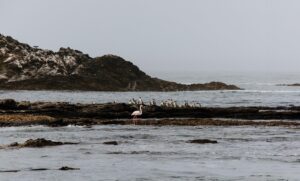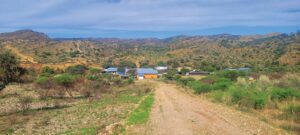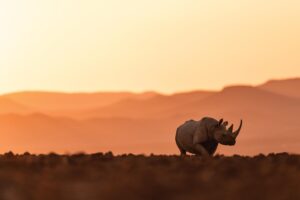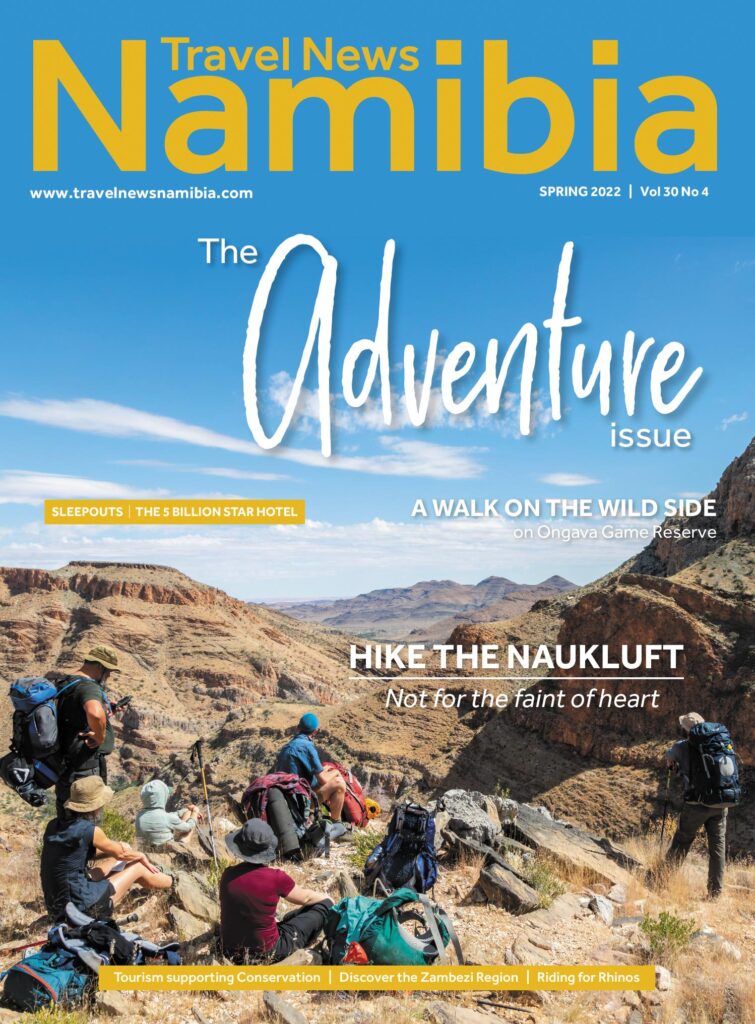
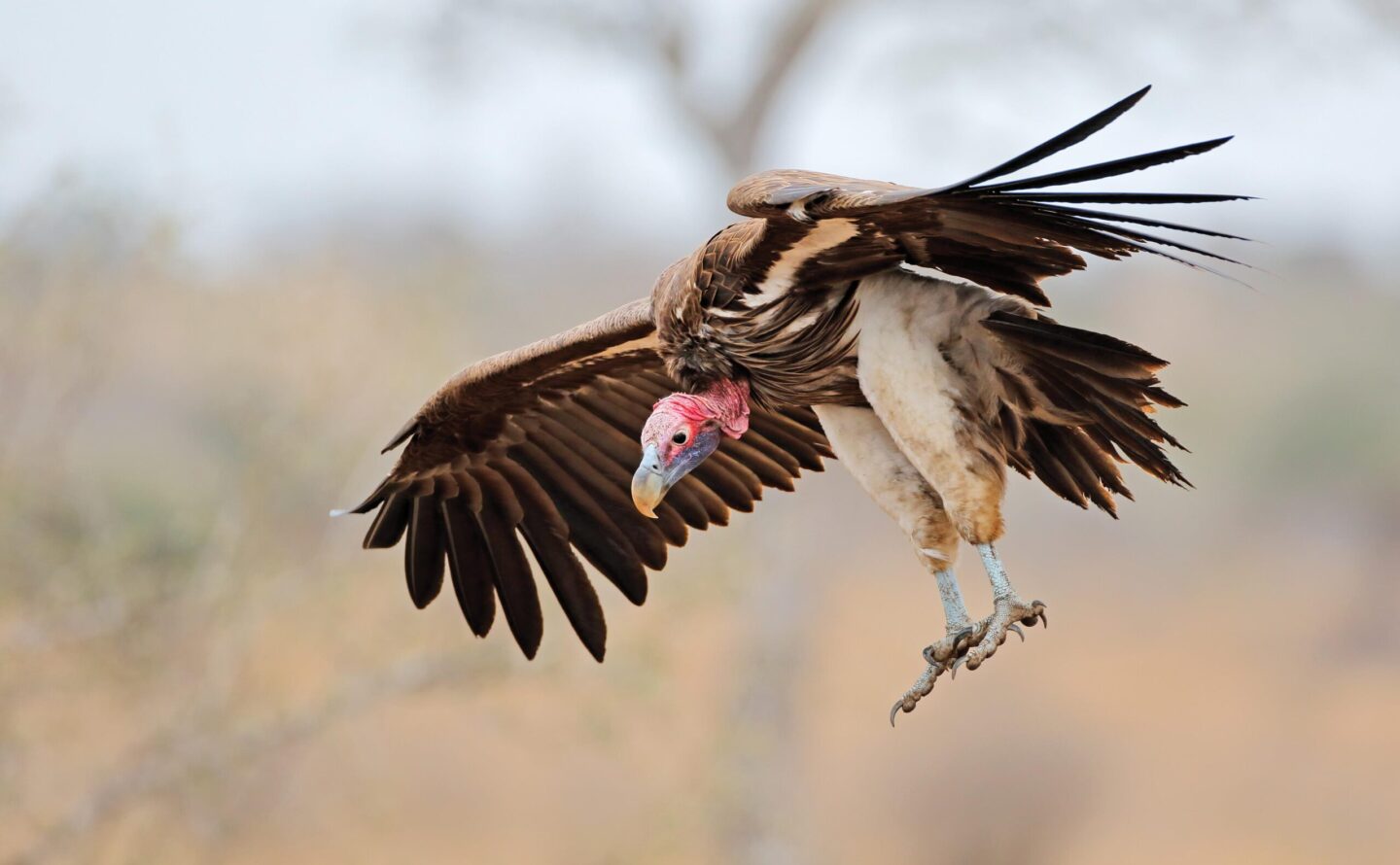
The value and virtue of vultures
I was hoping I would spot a Pygmy Falcon on my last trip to the Namib-Naukluft Park, Namibia’s largest conservation area. Small, spirited and snow-white, the bird appeared as misplaced as an Edelweiss flower in the desert. The Pygmy Falcon soared like a white star, in stark contrast to the dry riverbeds, gravel and grassy plains. Incidentally, the park of 49,768 square kilometres is slightly bigger than Switzerland. The area has at least 190 bird species. While this is also the hunting ground of other birds of prey, such as the much-admired Black-breasted Snake Eagle – not to forget the Black, Booted and Martial Eagle – it is the vultures of the area that recently stirred my interest. Following a global trend, Namibia’s vulture species are all threatened or endangered. In the uncertain times of Covid-19, these birds came into sharp focus, not only because they need our help but because we need them more. Immune to microbes that cause diseases like anthrax, rabies, tuberculosis, botulism and brucellosis, these birds literally clean up the microbes on a carcass in less than an hour, and in so doing stop the spread of disease to more susceptible animals and humans. In this area you will find Lappet-faced, White-backed and Cape Vultures if you are lucky, given the fact that seven of Africa’s eleven vulture species are heading for extinction.
Text Linda De Jager
From the Spring 2022 issue
My grandfather, Roelf de Jager, was one of the farmers who in 1937-38 seeked his fortune adjacent to the yet-to-be-proclaimed park. He endeavoured to tame the rugged area with the help of donkeys like Japie and Regter. His farm was rather ironically called Corona. Many small-stock farmers seeked to make a living here, especially after World War II, when the area was opened up for farming. In the heyday of karakul farming, the plains were teeming with livestock. And back then, there were still vultures in abundance, circling down on the carcasses of animals preyed on by jackals, leopards, cheetah and hyena. You still find the tracks of these predators in the area to this day. Vehicle tracks, however, were not the norm in the then South West Africa. The first vehicle with a petrol engine only arrived in Namibia in 1904, and in time would make it easier for these remote farmers to get karakul fur to the Windhoek depots. In this context, the steep cliffs of the central escarpment would have appeared even more daunting then than in the comforts of a modern-day vehicle. Close to the Gamsberg Pass, you still find the remnants of the tracks of the original De Jager’s Pass sloping down into the Namib plains. But even the tenacious spirit that enabled him to build a road here in the late thirties with the help of donkeys and a handful of workers, did not save Roelf from the same fate that befell the stock farmers of the era. Most of them had to eventually bend the knee to the unyielding desert environment. Even a little rainfall (less than 127 mm annually is the norm) was cause for celebration – and prompted the family to celebrate by eating a simple can of tinned fruit normally reserved for Christmas lunch only.
Today Corona Guest Farm is a popular tourist destination and the perfect base from which to climb the Gamsberg Mountain, but the remnants of two olds wells in the river still speak of a different era. Given the intense struggle for survival in this remote area, the farmers back then still used poison as a first line of attack against predators. It was the norm to use poisoned bait in the veld to kill predators feasting ruthlessly on their prized livestock. The impact of poison on vultures was recently explained to me by Dr Chris Brown of the Namibian Chamber of Environment: “The more efficient scavengers like vultures find the poisoned carcasses first. And also die first. Before the farmers even get to the predators,” he says. Other precious creatures like meerkats also die in this way. The sad truth that emerged over the years – as conservation awareness grew – is that the farmers inadvertently contributed to a very impoverished ecosystem that only partially recovered when the area’s focus shifted to include wildlife- and tourism-based activities. In effect, secondary poisoning of vultures when eating animals that have already died from the poison still continues on the African continent today. Poison still causes more than 60 percent of vulture mortality in Africa. In spite of several awareness campaigns in Namibia, a few of the old- school farmers still use poison to this day – not in the protected Namib-Naukluft Park, but in the wider adjoining areas.
Of the three vulture species here, it is the Cape Vulture which is the most vulnerable and susceptible. This explains why the original flocks of the Rostock Mountains were wiped out in the late sixties. Explains Chris: “Your Lappet-faced Vultures are individual animals. They will go up, fly at low levels, look for small carcasses and then they come down in pairs. They will feed on a carcass, and if it is poisoned it will be a pair that dies. The Cape Vultures are colonial. They go much higher up into the sky because they only feed on bigger carcasses. And they watch each other, hunting collaboratively – like a foraging net in the sky. If one quarter of the net sees a carcass, they all come down. Then the next one sees it, and the next … It is like pulling on a quarter of a net, and then the whole net comes down to feed on the carcass. And if that carcass is poisoned, you kill the whole flock.” In Africa, one poisoned elephant carcass causes 500 dead vultures per incident.
According to statistics provided by Vultures Namibia a vulture named Oscar was recently fitted with a tracking device. In just over a year the bird travelled a staggering 34,800 km in the Namib-Naukluft area. Outside of the protected area of the park, vultures like Oscar are vulnerable, but precisely because it is flanked by the safety of the park, there is hope for Namibia’s vultures. Here vultures are not persecuted for body parts used in traditional medicine like in other African countries. Power lines are also absent, which ensures that the vultures don’t accidentally get electrocuted when they collide with these lines. In this context, vultures have seen a slow but steady increase in the pro-Namib population over the last 15 years. “We have also seen the odd Cape vulture arrive from South Africa as a young bird. That is how far they fly. Then they disappear again and go back to their flocks,” says Chris. Given the huge areas in question, it became clear to me that there is much merit in the efforts of organisations like the Endangered Wildlife Trust to develop large Vulture Safe Zones in southern Africa.
This approach aims to reduce the impact of threats to stabilise the recovery of existing vulture populations. This conservation measure is also on the cards for Namibia and will unite powerful stakeholders in the interest of vultures.
If my grandfather would have been alive today (with the benefit of hindsight) he would have taken a bird’s eye view on the intrinsic value of vultures. Scientists say vultures are worth millions. Organisations like BirdLife International estimate that a single vulture is worth more than US$11,000 just for its cleaning services. “They are worth much, much more to governments in saved health service costs, not to mention tourism.”
If my grandfather could sit on Corona’s veranda today – staring towards Namibia’s endless horizons – and spot an iconic vulture circling into sight, he would have been astonished to realise that the value of one vulture would now outweigh the price of one karakul fur a thousandfold.
After all, it takes a resilient spirit to recognise the self-same antifragile qualities in another creature; qualities that still prevail in all living things who dare to call this area home. TNN


